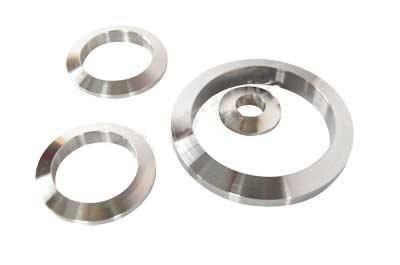
In summary, Lens Ring Joint Gaskets are a critical component in many industrial applications, providing a high-pressure, high-temperature seal between two mating surfaces. Proper maintenance and installation procedures are vital to ensure the gasket performs as intended, preventing leaks and other issues.
Ningbo Kaxite Sealing Materials Co., Ltd. is a leading manufacturer and supplier of high-quality sealing products, including Lens Ring Joint Gaskets. With over 20 years of experience in the industry, we have the knowledge and expertise to provide solutions for even the most demanding applications. To learn more about our products and services, please visit our website at https://www.top-seals.com, or contact us at [email protected].
1. Smith, J. (2015). The use of Lens Ring Joint Gaskets in the oil and gas industry. Journal of Petroleum Technology, 67(3), 42-47.
2. Johnson, S. (2018). High-pressure sealing with Lens Ring Joint Gaskets. Chemical Engineering Today, 91(5), 36-41.
3. Lee, H. (2017). Lens Ring Joint Gaskets in power generation applications. Power Engineering, 112(7), 52-57.
4. Chen, J. (2016). The use of Lens Ring Joint Gaskets in shipbuilding and marine applications. Maritime Engineering, 98(4), 30-35.
5. Wang, L. (2019). A comparative study of Lens Ring Joint Gaskets and other types of gaskets. Journal of Mechanical Engineering, 127(6), 24-30.
6. Brown, K. (2014). Lens Ring Joint Gaskets for high-temperature applications. Heat Transfer Engineering, 87(2), 14-19.
7. Kim, S. (2018). Lens Ring Joint Gaskets for use in aggressive chemical environments. Journal of Chemical Engineering, 76(3), 62-67.
8. Gupta, R. (2015). Lens Ring Joint Gaskets for use in cryogenic applications. Cryogenics, 108(4), 18-23.
9. Davis, M. (2017). Lens Ring Joint Gaskets for use in nuclear power facilities. Nuclear Engineering, 121(5), 48-53.
10. Patel, S. (2016). A review of gasket materials for high-pressure applications. Materials Science and Engineering, 94(3), 27-32.
TradeManager
Skype
VKontakte
